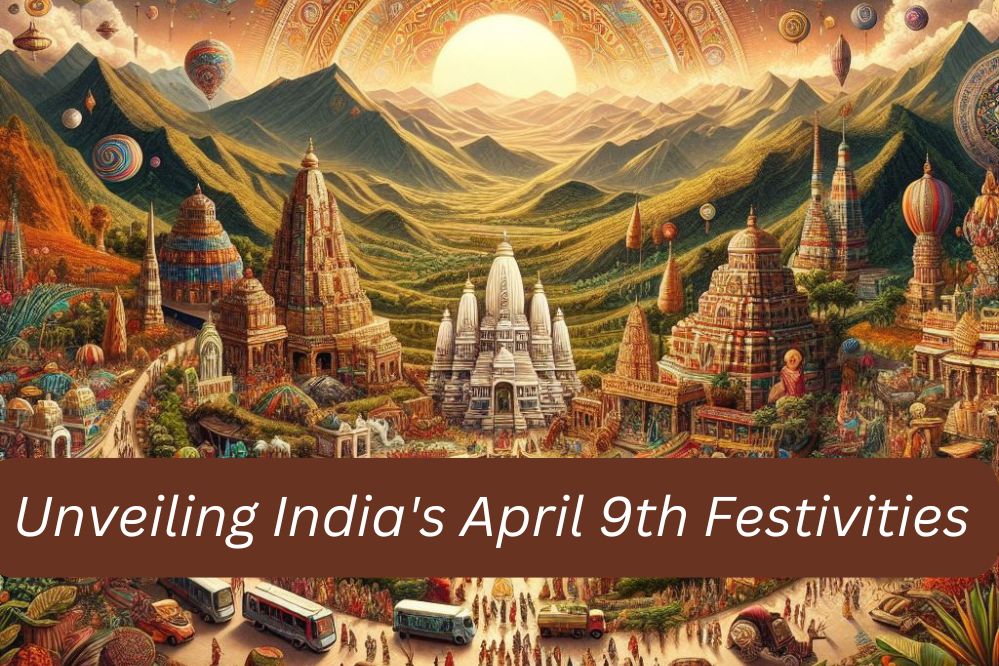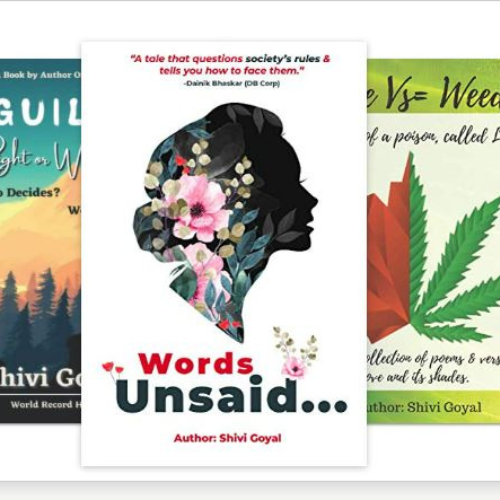Chaitra Navratri 2024: The auspicious nine-day Hindu festival of Chaitra Navratri is right around the corner. India’s April 9th Festivities Navratri is celebrated four times yearly. Shardiya Navratri, Chaitra Navratri, Magha Gupt Navratri, and Asadha Gupt Navratri. However, Shardiya Navratri and Chaitra Navratri are more popularly observed out of these four. The Navratri celebrations beginning on the first day of the Hindu Luni-Solar calendar are called the Chaitra Navratri. Also known as Vasant Navratri, Hindu devotees worship Maa Durga and her nine forms over the nine days. Meanwhile, on the last day of Chaitra Navratri, devotees observe Ram Navami to mark the birth of Lord Rama.

India’s April 9th Festivities marks the beginning of a series of lively and colourful festivals celebrated across India. Across the vast and vibrant tapestry of Indian culture, April 9th, ‘2024, explodes with a kaleidoscope of celebrations. There’s no shortage of ways to celebrate this festive day from north to south, east to west. From welcoming a new year to cherishing the harvest season, the day resonates with diverse traditions, each unique to a particular region.
Today, we embark on a journey to explore the rich history and customs woven into this multifaceted festival. So get ready to mark your calendars. Join in the fun as we take you on a state-by-state guide to India’s April 9th Festivities! Happy festivals to all!
For the day’s spiritual importance, read the blog:
Maharashtra paints the town red (literally) with Gudi Padwa. Here, the day signifies the start of the Chaitra month and the harvest season. A vibrant flag called the “gudi,” adorned with mango leaves and neem twigs, is hoisted outside homes, symbolizing victory and new beginnings. Mouthwatering delicacies like “puran poli” (a flatbread stuffed with lentil paste) and “shrikhand” (a sweet yoghurt dish) grace the tables, and families visit temples to seek blessings for a bountiful harvest.
Poila Boishakh – West Bengal
Poila Boishakh, or Bengali New Year, is celebrated in West Bengal with much pomp and show. The day begins with rituals like offering prayers to Goddess Kali and visiting relatives to seek blessings. People dress in traditional Bengali attire, with women wearing white sarees with red borders and men donning kurta pyjamas. The festivities include cultural programs, music, dance, and delicious Bengali cuisine. Poila Boishakh is a time to cherish Bengal’s rich cultural heritage and look forward to a new year of prosperity and happiness.
One of this day’s most widely celebrated names is Ugadi (Yugadi in Karnataka), meaning “the beginning of a new age.” Observed primarily in Andhra Pradesh, Telangana, and Karnataka, Ugadi marks the first day of the Hindu lunisolar calendar. Homes are adorned with intricate rangoli (colourful floor patterns). A unique concoction called “bevu bella” (made from neem flowers, jaggery, and lentils) is savoured, symbolizing the bittersweet nature of life. Pundits (priests) recite predictions for the year ahead while families gather for elaborate feasts, ushering in the new year with hope and optimism.
Further north, the echoes of Cheiraoba reverberate in Manipur. This festival, coinciding with Ugadi, marks the beginning of the Meitei year. Homes are thoroughly cleaned, and a special prayer called “Sanamahi Laoba” is offered. To the Meitei deities for prosperity and well-being. Traditional games and vibrant folk dances like “Lai Haraoba” fill the air with an infectious energy. Showcasing the region’s rich cultural heritage.
Vishu – Kerala, Vishu is a traditional festival celebrated in the southern state of Kerala to mark the Malayalam New Year. The day begins with Vishukkani. A ritual where people wake up to see auspicious items like rice, fruits, flowers. And gold in front of a mirror. Seeing Vishukkani first thing in the morning is believed to bring good luck and prosperity. People also burst firecrackers, exchange gifts, and indulge in a grand feast with family and friends. Vishu is a time to start the new year on a positive note and seek blessings for a fruitful year ahead.
Puthandu – Tamil Nadu, Puthandu, also known as Tamil New Year, is celebrated with traditional fervour and gaiety in Tamil Nadu. The day begins with an auspicious bath and prayers at temples. Followed by the preparation of a particular dish called Maanga Pachadi, a sweet and tangy mango relish. People wear new clothes, exchange greetings, and visit relatives to seek blessings. Cultural programs, music, dance, and games are organized to mark the occasion. Puthandu is a time to celebrate the richness of Tamil culture and traditions.
Bohag Bihu, the vibrant spring festival of Assam, also finds its rhythm on April 9th. Marking the Assamese New Year, Bihu is a three-part celebration. Bohag Bihu, or the “Rongali Bihu,” signifies the beginning of the sowing season. Traditional songs called “Bihu Geet” fill the air, accompanied by rhythmic dances. This joyous occasion is characterized by vibrant clothes, delicious feasts featuring “xotol”. And a fermented rice beverage, and prayers for a bountiful harvest.
In Punjab, the spirit of Baisakhi takes centre stage. Marking the Sikh New Year and the harvest festival, Baisakhi is a day of immense joy and gratitude. The iconic “Golden Temple” in Amritsar becomes a focal point for celebrations, with colourful processions, community prayers. The traditional “langar” (community kitchen) serving as testaments to the Sikh principles of equality and service. Conventional martial arts performances called “gatka” add a touch of vibrancy to the festivities.
Rama Navami, another significant festival observed from April 9th to April 17th this year, transcends regional boundaries. This day celebrates the birth of Lord Rama, the seventh avatar of Vishnu. Devotees throng temples, reciting devotional hymns and enacting scenes from the epic Ramayana. Many observe fasts and engage in prayer, seeking blessings from Lord Rama.

The rich tapestry of the April 9th celebrations in India extends far beyond these examples. From the “Poila Boisakh” of Bengal to the “Vishu” of Kerala. Each region infuses the day with its unique customs and traditions. This multitude of names reflects the incredible diversity of Indian culture. Yet, they all converge on a common thread. The celebration of new beginnings, hope for a prosperous future, and gratitude for the bounties of nature.
Keep Smiling & Be Graced!!
Facebook | Instagram | YouTube | Goodreads | Artwork | Books | Journals – Diaries – Notebooks | Author Central Page | LinkedIn
For collaboration, workshops and to come as a guest at my podcast (the healing tree) please hit an email – spiritedblogger707@gmail.com


